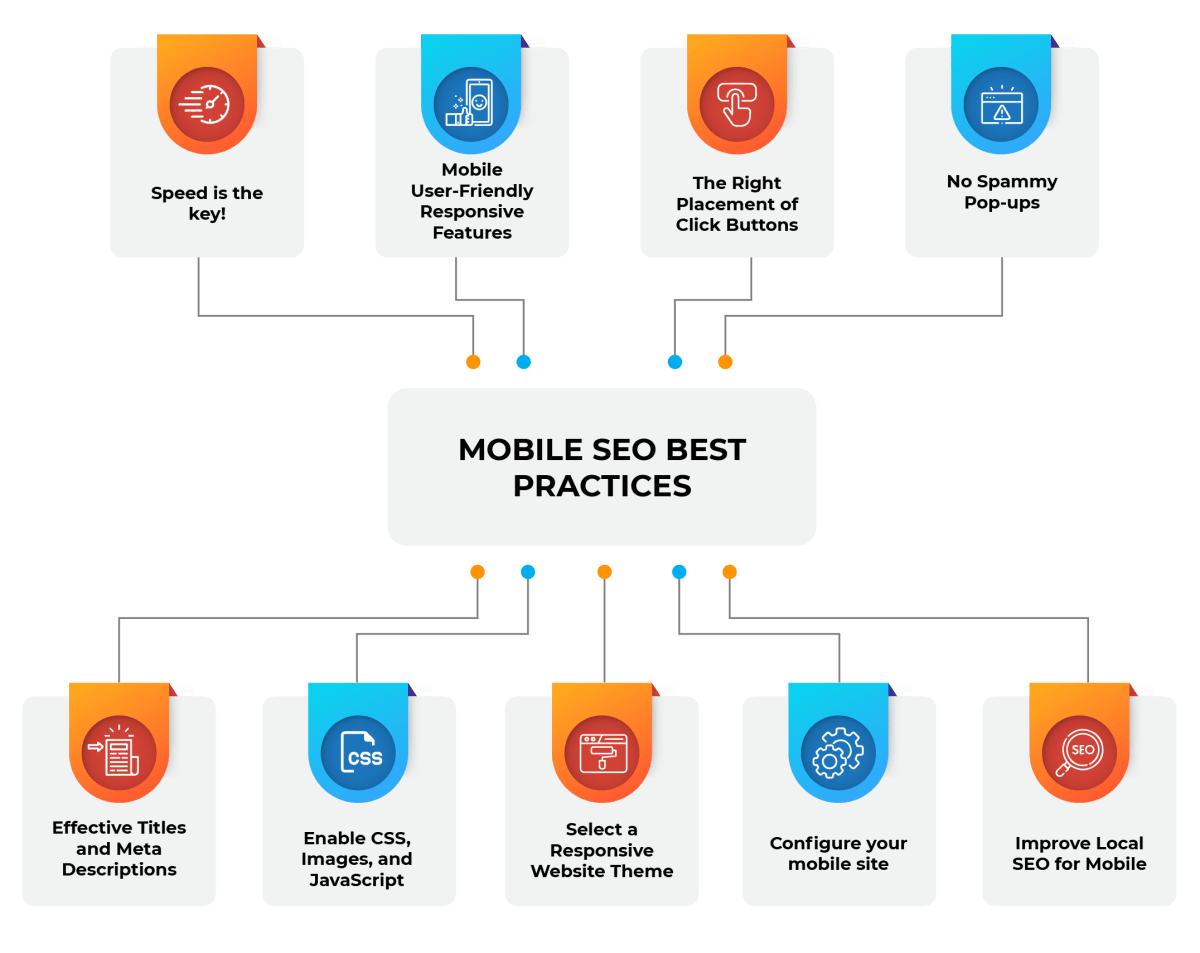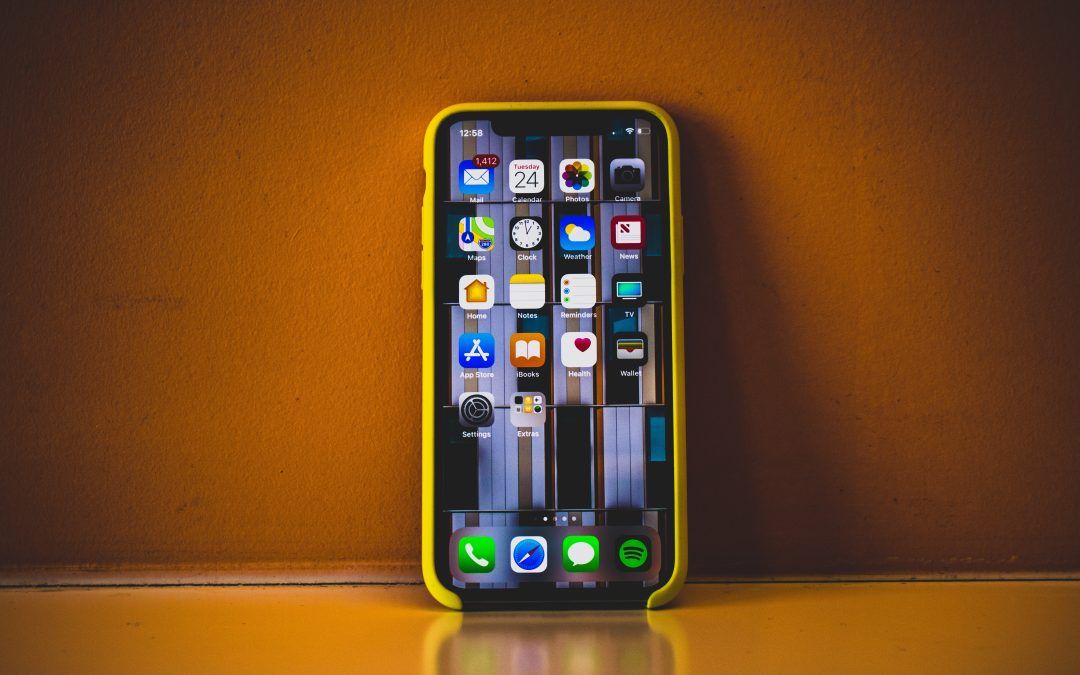Why is Mobile SEO Essential?
Recent studies have indicated that 61% of Global internet traffic comes from mobile devices, and 51% of users find a new product when they search using their mobile phones. What’s more, the top Google algorithm has switched from desktop-first to mobile-first.
What do these statistics imply? With over half of the global internet traffic coming from mobile users, as a website owner, you should prioritise mobile SEO to gain valuable traffic from mobile devices.
Kickstart Your Mobile SEO Now!
With the rapidly growing number of mobile phone users, Google has started to prioritize and rank websites based on mobile performance. Hence, ensuring your website is responsive and easy to use on users’ smartphones and tablets is best.

Mobile SEO Best Practices
Here are some of the best practices to help you optimize your mobile SEO.
1. Speed Is The Key!
A website on mobile devices should load as fast as on a desktop, that is, at most 3-4 seconds. Nowadays, most users have a short attention span, which is why the loading speed of your webpage matters. If your website takes more than 4 seconds to load on a mobile device, the user will most likely give up and search for your competitors’ sites that load faster than yours.Google Page Speed Insights is a tool you can use to check your page loading speed, where it shows your site’s performance and areas where improvement is needed. It will also suggest ways to enhance the loading time of your website for mobile users.
2. Mobile User-Friendly Responsive Features
Beyond optimizing images, you’ll want to minify code, leverage browser caching, and reduce redirects. More information on page speed can be found on our SEO Best Practices for Page Speed page. You ought to ensure that smartphone or tablet users get the best user experience by integrating mobile user-friendly responsive features into your site’s design that makes it easier for users to browse your website.
Simply put, your website design should be mobile responsive which fits into the screen of smartphone or tablet scroll where users can view and scroll through your site easily, without having to keep zooming in and out or scrolling left and right to view the content on your site.
3. The Right Placement of Click Buttons
Accidental clicks on buttons that are too huge or too small can easily happen in touchscreen navigation on mobile devices or in the path of a finger that’s trying to get the page to scroll.
4. No Spammy Pop-ups
Although pop-ups can be an effective method to capture user’s attention to a particular action, such as signing up to receive promotional-related emails or download discount vouchers, too many pop-ups can be frustrating, as users need to keep closing these pop-ups on their mobile devices which can result in a high bounce rate. What’s worse, imagine how frustrated users may feel if the pop-ups occupy the whole smartphone’s screen, obstructing them from viewing the information they are looking for.
If you decide to use any pop-ups on your website, place them where it matters most and ensure they don’t block the display of crucial information on your site. Make it easy for the user to close the pop-ups by placing a prominent “X” or “Close” sign on top of the pop-ups. Be extremely careful when using pop-ups on your page so they won’t negatively affect your mobile SEO.
5. Effective Titles and Meta Descriptions
Always bear in mind that mobile devices have limited screen space. Thus, it is essential to display your work effectively in SERPS with precision, that is, to create optimized titles, URLs, and meta descriptions (i.e. HTML element which gives a summary of a web page), without losing the main essence and quality of your content. In addition, your search results with snippets will be more appealing on a limited smartphone screen than desktop.
6. Enable CSS, Images, and JavaScript
Unlike the old days, current mobile devices can easily support elements such as CSS and optimized images. Hence, enabling these elements is crucial to help Google determine whether your website is mobile-responsive. In addition, the Googlebot (i.e. Google’s web crawler that allows collecting the information required to build a searchable index) can view and categorize similar content users seek.
7. Select a Responsive Website Theme
When building your website, especially for beginners, choose a website design theme with built-in mobile responsive features to create a mobile-friendly site easily. In short, your website with a mobile responsive theme will automatically adapt to any smartphone and tablet. This is the most convenient option for those who need to be more technical savvy.
On the contrary, if you already have an existing desktop website, you should first download a backup version of your site before you change your website design theme so that you won’t lose crucial information about your website in the theme-switching process. Also, make sure there is a feature for you to restore the previous version of your website in case any technical issues occur. Usually, most website templates and CMS themes provided by website builders are equipped with mobile responsive design; thus, many theme selections are available for you.
8. Configure Your mobile site
When building your website, it is critical for you to decide which type of configuration you want to use. There are three configuration types: responsive, dynamic serving, and separate URLs. Each type of configuration has its pros and cons. However, a responsive design is a preferred version by Google, although Google can support all three types of configuration.
9. Improve Local SEO for Mobile
To help you optimize local search by users of mobile devices, you can standardize your business or company details such as business name, address (include your city and state name), and phone number in your website’s metadata.

